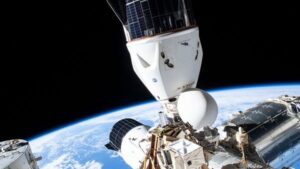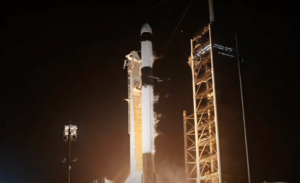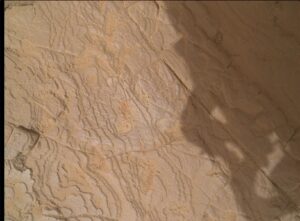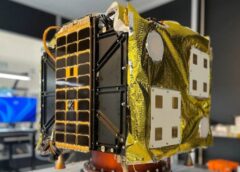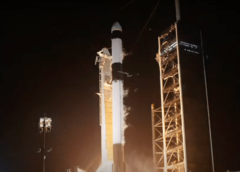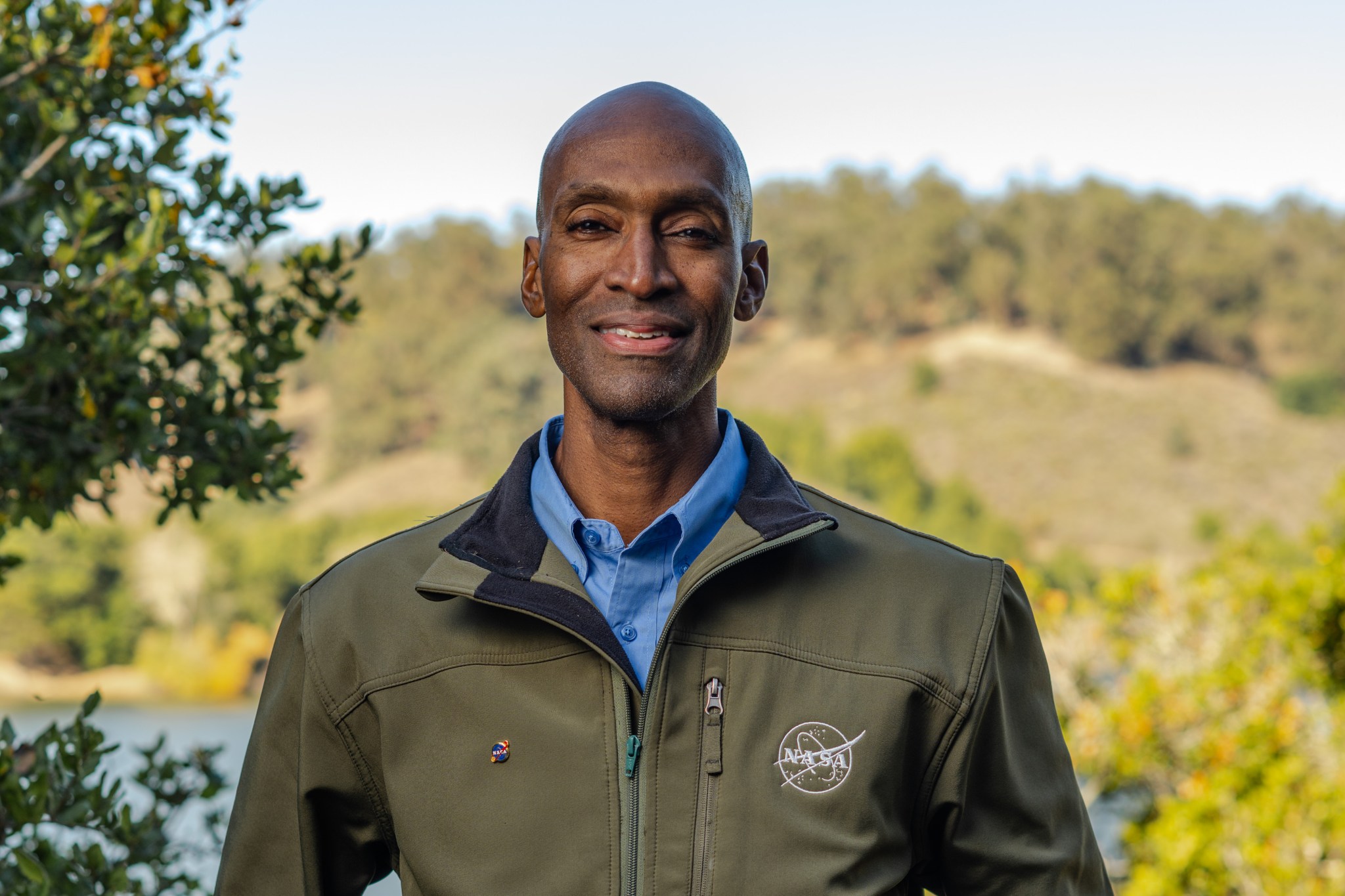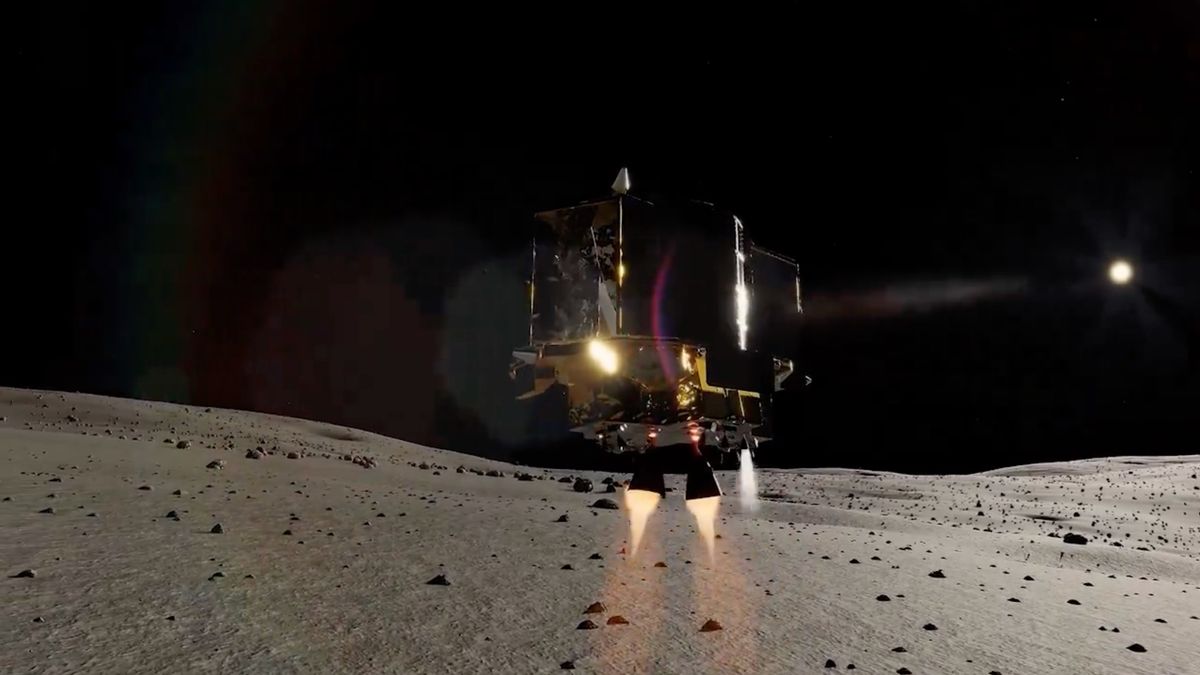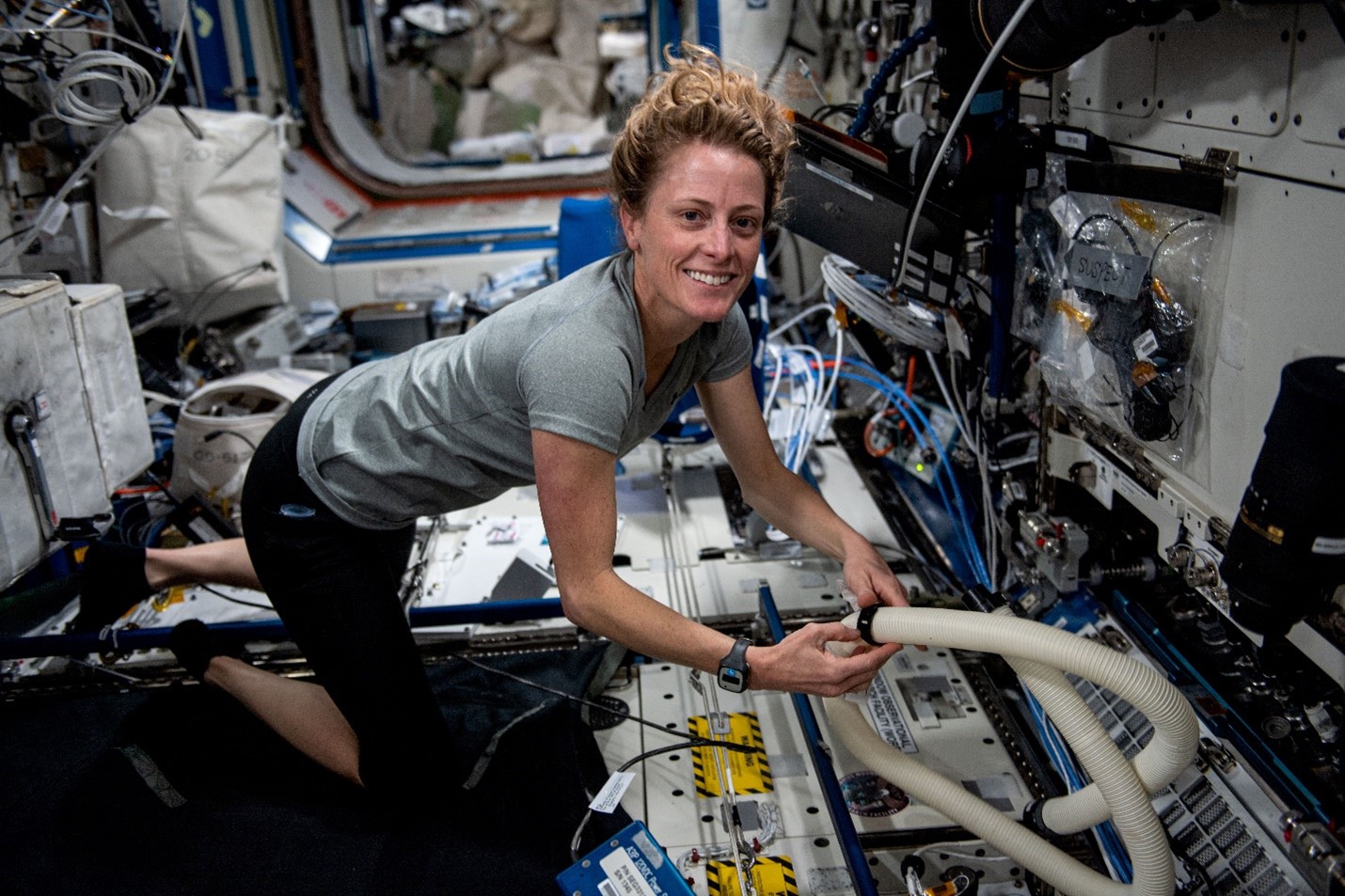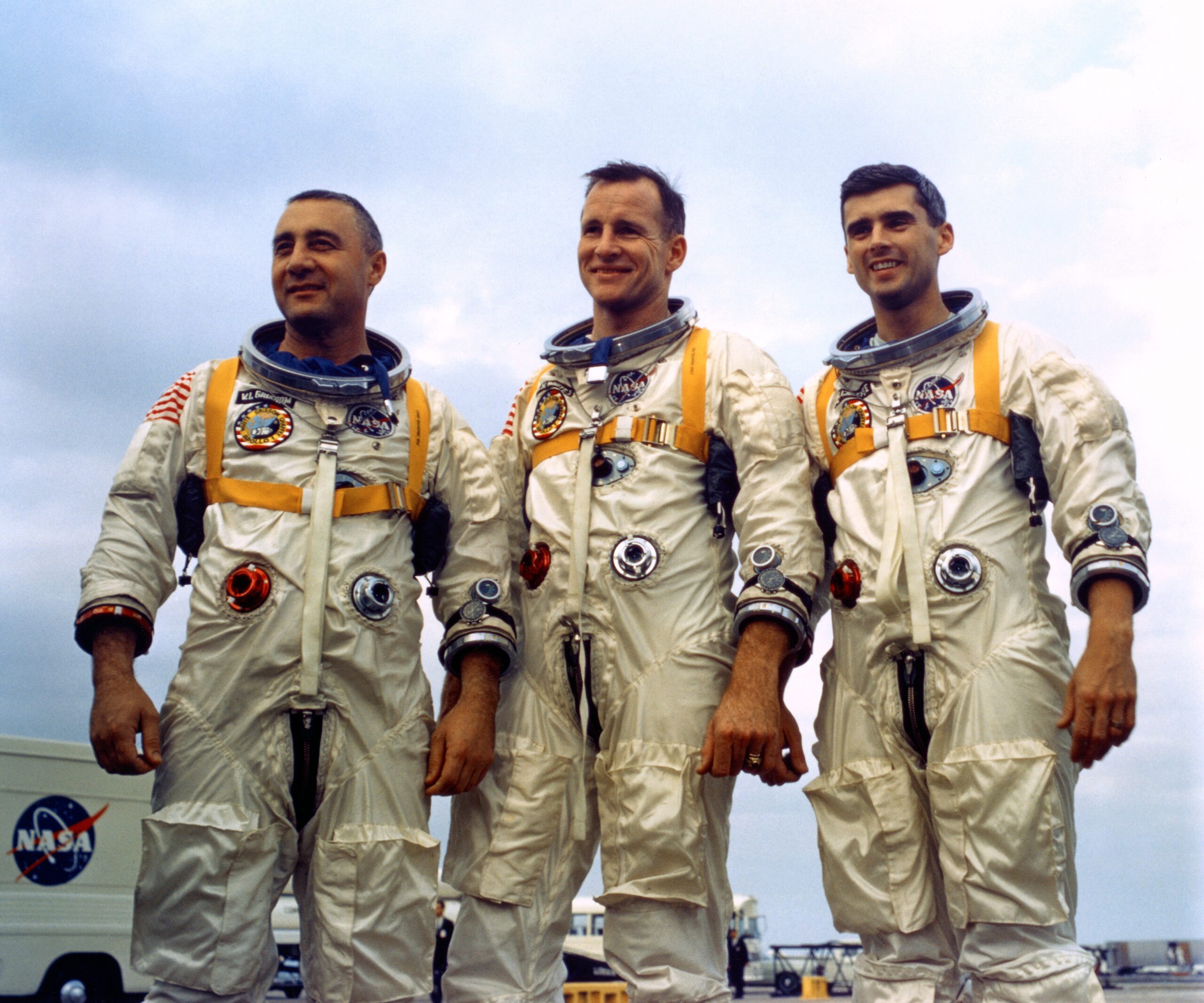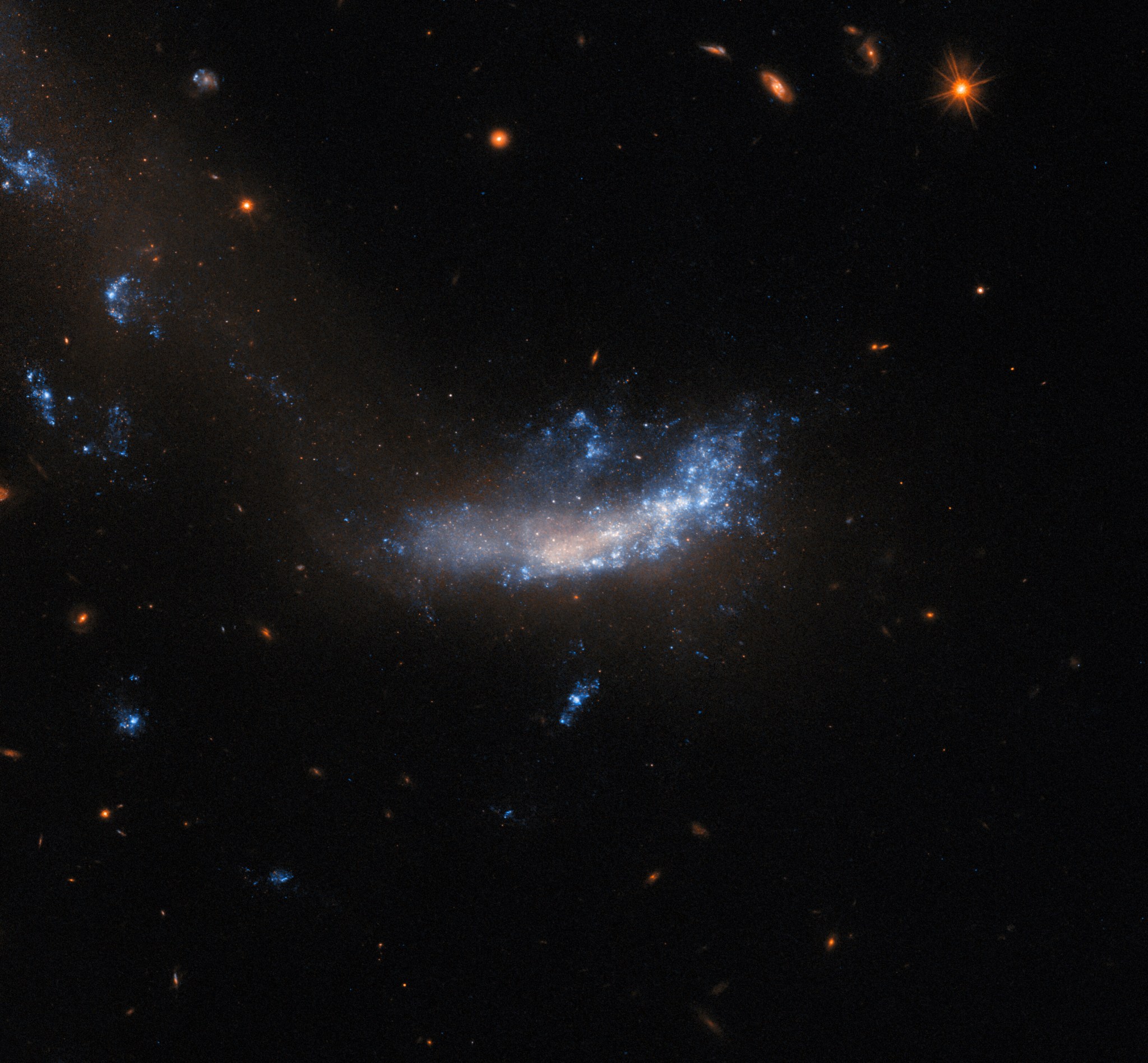Cameras aboard Peregrine capture the American flag and the NASA insignia on one of the lander’s tanks to signify America’s return to the Moon. Credits: Astrobotic The first flight of NASA’s commercial lunar delivery service carrying agency science and technology, as well as other customer payloads intended for the Moon, has come to an end. After 10 days and 13 hours in space, Astrobotic’s Peregrine Mission One made a controlled re-entry on Earth over open water in the South Pacific at approximately 4:04 p.m. EST on Jan. 18. Astrobotic was…
Read MoreNASA’S OSIRIS-REx Curation Team Reveals Remaining Asteroid Sample
A top-down view of the OSIRIS-REx Touch-and-Go-Sample-Acquisition-Mechanism (TAGSAM) head with the lid removed, revealing the remainder of the asteroid sample inside. Erika Blumenfeld, creative lead for the Advanced Imaging and Visualization of Astromaterials (AIVA) and Joe Aebersold, project management lead, captured this picture using manual high-resolution precision photography and a semi-automated focus stacking procedure. The result is an image that can be zoomed in on to show extreme detail of the sample. The remaining sample material includes dust and rocks up to about .4 in (one cm) in size.
Read MoreDeputy Discovery and Systems Health Technical Area Lead Dr. Rodney Martin
“[In] everyone’s life, they have a pivotal moment when they ask the question, ‘What am I really doing? What am I here for?’ … I’m reminded of a credo that I came up [with] through the evolution of my engagement of a whole bunch of recreational pursuits [including being a marathoner, ultrarunner, and Ironman triathlete] … as well as my professional pursuits. It’s threefold, and here’s what it is: “[First,] I’m here because I want to be able to challenge myself, to see how much I can squeeze out of…
Read MoreNASA Goddard Experts to Take Part in February STEM Conference
3 min read Preparations for Next Moonwalk Simulations Underway (and Underwater) Alongside experts from academia and industry, leaders from NASA’s Goddard Space Flight Center in Greenbelt, Maryland, will be on hand at the Feb. 25–29 PowerSource Global Summit conference in Orlando. Dr. Christyl Johnson, Goddard’s deputy center director for technology and research investments, will deliver the conference’s keynote address on Feb. 26, sharing insights on space exploration developments as they relate to the 2024 summit’s theme: “Women in STEAM Powering the Metaverse.” “STEAM” adds “arts” to the “STEM” science, technology,…
Read MoreJapan’s ‘Moon Sniper’ probe attempts historic soft-landing on lunar surface. But did it make it?
A Japanese lander touched down on the moon this morning (Jan. 19), but it wasn’t immediately clear if the probe survived the historic maneuver. The robotic SLIM spacecraft hit the gray dirt on schedule today at 10:20 a.m. EST, but that’s about all we know at this point. “From the telemetry, what we see is the SLIM has landed,” a spokesperson with the Japan Aerospace Exploration Agency (JAXA) said during live commentary of the landing this morning. “We are now checking the status.” The agency will hold a press conference…
Read MoreBoston Students to Hear from NASA Astronaut Aboard Space Station
NASA astronaut and Expedition 70 Flight Engineer Loral O’Hara scrubs spacesuit cooling loops in preparation for a round of spacewalks. NASA Students, staff, and researchers from Massachusetts General Hospital, Harvard Medical School, and two local public schools in Boston will have an opportunity next week to hear from NASA astronaut Loral O’Hara aboard the International Space Station. The Earth-to-space call will air live at 9:55 a.m. EST Tuesday, Jan. 23, on NASA+, NASA Television, the NASA app, and the agency’s website. Learn how to stream NASA TV through a variety of platforms including social…
Read MoreShould I buy a cheap beginner drone to build my flight skills?
One of the main questions newbie drone pilots ask is whether or not it’s worth buying an inexpensive drone to develop their flight skills before moving on to a more expensive and advanced model. It’s not a straightforward question to answer because different people are naturally comfortable taking on varying levels of risk and have different budgets, but it’s not a bad idea. The greatest fear of all beginner drone pilots is crashing, which is understandable given the cost of some drones. For the most part, crashing is simply the…
Read MoreWatch NASA test revolutionary new rotating detonation rocket engine (video)
Houston, Texas-based Venus Aerospace, a hypersonics pioneer aimed at developing reusable hypersonic flight platforms, recently achieved one of the longest sustained tests of a rotating detonation rocket engine (RDRE) in collaboration with NASA’s Marshall Space Flight Center. A rotating detonation rocket engine combusts its fuel and oxidizer in a circular motion inside a ring-shaped channel. The shockwaves from the detonation of fuel and oxidizer create a self-sustaining combustion reaction, making this form of propulsion more efficient than conventional combustion engines. Venus Aerospace’s recent RDRE demonstration sustained the longest engine run…
Read More55 Years Ago: Six Months Until the Moon Landing
The new year of 1969 dawned with optimism that NASA would meet President John F. Kennedy’s goal of landing a man on the Moon and returning him safely to the Earth. The previous year saw four Apollo missions, two uncrewed and two carrying three astronauts each, test different components of the lunar landing architecture, culminating with Apollo 8’s December flight around the Moon. Challenges remaining for the new year included testing the Lunar Module (LM) with a crew, first in Earth orbit, and then in lunar orbit, a flight that…
Read MoreHubble Views a Galactic Supernova Site
2 min read Hubble Views a Galactic Supernova Site This NASA Hubble Space Telescope image is of the small galaxy known as UGC 5189A. ESA/Hubble & NASA, A. Filippenko This image features a relatively small galaxy known as UGC 5189A, which is located about 150 million light-years away in the constellation Leo. This galaxy was observed by the NASA/ESA Hubble Space Telescope to study a supernova explosion in 2010 known as SN 2010jl. This particular supernova is notable because it was an exceptionally luminous supernova event. In fact, over a period of three years,…
Read More

